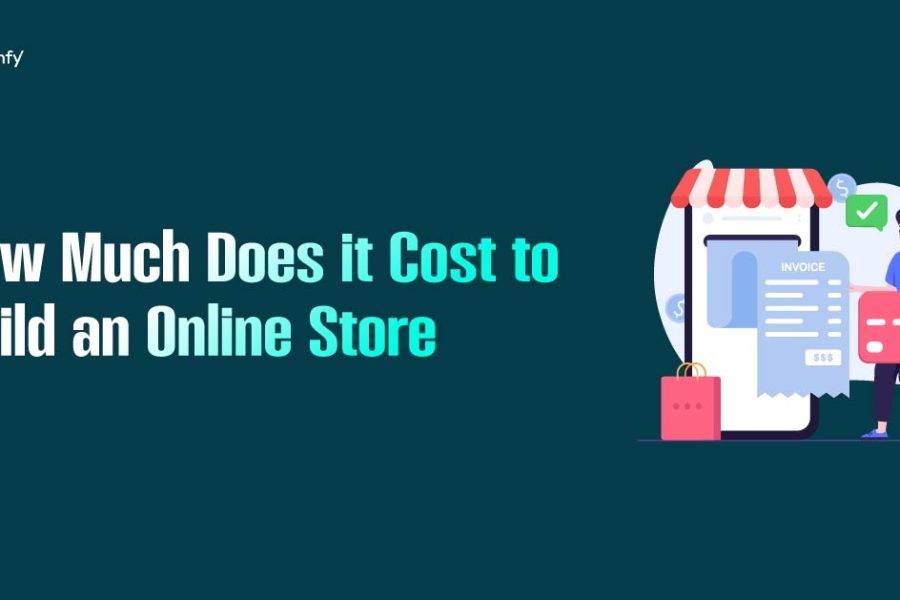Cart abandonment in Shopify happens when potential customers add products to their cart but leave your store before completing the purchase. It’s like having a shopper pick out items in a physical store, place them in a cart, walk up to the counter, and then leave. It hurts especially when you’ve done everything to get them that far.
With an average abandonment rate of over 69%, Shopify store owners are losing a massive chunk of potential revenue daily. Tools like Google Analytics, Meta Pixel (formerly Facebook Pixel), and Klaviyo help track these lost opportunities and understand where things are going wrong. Shopify’s own abandoned checkout analytics also offer detailed insights into customer behavior.
Understanding cart abandonment metrics is crucial for measuring the number of users who leave without making a purchase. By analyzing these metrics, you can develop effective strategies to enhance your Shopify checkout flow and decrease shopping cart abandonment rates.
Table of Contents
ToggleTop Reasons for Shopify Cart Abandonment

Let’s learn the hidden blockers and why carts get left behind.
Unexpected Extra Costs
One of the biggest reasons customers abandon their Shopify carts is the high extra costs. Unexpected shipping, taxes, or Shopify service fees at checkout can drive users away in seconds. Customers hate surprises, especially ones that add up.
Complicated Checkout Process
Another big issue is the complicated checkout process. If your checkout flow involves too many steps, form fields, or page reloads, you’re increasing the chance of a dropout. Modern users, especially mobile shoppers, expect a fast, seamless experience.
Mandatory Account Creation
Forcing account creation before purchase is another deal-breaker. Many users abandon their carts when asked to register. Offering a guest checkout option significantly improves conversions.
Lack of Trust Elements
And then there’s the issue of trust. If your site lacks visible trust badges or secure payment icons, customers may hesitate to make a purchase. Trust elements, such as SSL certificates, verified payment gateways, and recognizable logos, are vital to instilling confidence.
Improve Shopify Checkout Flow to Reduce Friction

Learn the tiny tweaks that make checkout feel easier, faster, and itch-free.
Simplify Checkout Steps
Reducing friction in the checkout process is one of the most effective ways to recover abandoned carts. Start by simplifying your checkout to fewer steps. A single-page checkout process or a clearly marked progress bar helps customers see that they’re almost done.
Enable Guest Checkout
Enabling guest checkout is a must. Don’t force users to create an account unless they want to. Let them check out as a guest, then offer them the option to register post-purchase.
Use Progress Indicators
Use progress bars at the top of your checkout pages to enhance the user experience. This helps users understand how far they’ve come and how much is left. It’s a simple psychological trick that encourages completion.
Display Trust Signals
Add visible trust indicators such as Shopify trust badges, secure checkout seals, and supported payment methods. When users see familiar icons like Visa, MasterCard, or PayPal, they feel safer entering their details.
Optimize Site Performance for Better Checkout Completion

Know how a few speed wins turn hesitant browsers into confident buyers.
Improve Page Speed
Site speed plays a critical role in reducing checkout abandonment. If your Shopify site takes more than 3 seconds to load, chances are you’re losing customers. Use tools like Google PageSpeed Insights or GTmetrix to analyze and improve your site speed.
Ensure Mobile Optimization
Make sure your site is fully optimized for mobile. Over 65% of Shopify traffic comes from mobile devices. Optimize images, simplify navigation, and use mobile-friendly payment methods like Apple Pay or Google Pay.
Test During High Traffic Periods
Also, check how your site performs under heavy traffic. A slow site during sales or promotions can lead to a poor user experience and higher cart abandonment rates.
Use Exit Intent Popups to Capture Leaving Shoppers
Exit-intent technology allows you to detect when a user is about to leave your site and triggers a pop-up. These pop-ups can be used to offer discounts, remind users of the items in their cart, or even ask for feedback.
Apps like Privy and OptiMonk offer powerful exit intent pop-up features. You can customize these popups based on cart value, product type, or time spent on the site. This level of personalization can drastically reduce Shopify checkout abandonment.
Creating a timed incentive, such as a 10% discount that expires in 10 minutes, can also be very effective. Combining urgency with value helps convert hesitant shoppers.
Implement Cart Reminder Automation Tools
Discover how right-time, low-friction reminders can revive abandoned carts while maintaining a helpful, non-pushy brand image.
Set Up Automated Cart Messages
Shopify offers native tools and integrations to automate cart reminder messages. You can use apps like Klaviyo, SMSBump, and Shopify Email to send personalized messages to customers who leave items behind.
Use SMS for Higher Engagement
Cart abandonment SMS strategies are gaining traction because of their high open rates. Sending a friendly reminder via text an hour after abandonment can bring back a significant number of users.
Push Notifications for Re-Engagement
Push notifications are another smart option. Apps like PushOwl help you re-engage users who’ve left your store. A well-timed push notification about a product that’s about to sell out can be incredibly effective.
Leverage Abandoned Checkout Emails the Right Way
Abandoned checkout emails are still one of the most effective ways to recover lost sales. Start by setting up a three-part email sequence through Shopify Email or automation apps like Klaviyo.
Send the first email within an hour of abandonment, a second one within 12–24 hours offering a discount, and a final reminder 48 hours later with a sense of urgency.
Use personalization in the subject line and email body. Mention the product left behind, and create urgency with phrases like “Almost sold out!” or “Complete your order before it’s gone.”
Shopify Flow allows you to customize these email flows with smart conditions. For example, you can send a different message if the cart value is over $100 or if the shopper is a returning customer.
Use Incentives to Complete Purchase
Here is why small, smart offers tip the decision right at the finish line.
Set Free Shipping Thresholds
Incentives can make a big difference in pushing users to complete their purchase. One popular strategy is setting a free shipping threshold. For example, offer free shipping on orders over $50 and display a dynamic message, such as “You’re just $10 away from free shipping!”
Create Limited-Time Offers
Time-limited discounts are another great tactic. Offering a discount that expires within 24 hours creates a sense of urgency. Use countdown timers on your site or in your emails to visually reinforce this.
Offer First-Time Buyer Discounts
First-time buyer incentives also work well. Giving new customers a 10% discount or a gift can encourage them to take that first step.
Track and Analyze Cart Abandonment Behavior

Learn the few metrics that reveal where your checkout leaks and what to fix first.
Use Analytics Tools
To reduce shopping cart drop-off, you need to track and understand why users are abandoning their carts. Google Analytics provides valuable insights into your checkout funnel. Use it to identify which pages have the highest exit rates.
Leverage Meta Pixel for Retargeting
Meta Pixel (formerly known as Facebook Pixel) helps track customer behavior for remarketing purposes. You can retarget users who abandoned their cart through Facebook or Instagram ads.
Study Heatmaps and Session Recordings
Heatmap tools, such as Hotjar or Lucky Orange, provide visual data on how users interact with your site. See where they click, scroll, and drop off. These tools help you identify hidden UX issues that affect conversions.
Compare Industry Benchmarks
Compare your performance with cart abandonment benchmarks. A mobile abandonment rate of over 75% is considered high. Desktop abandonment should ideally be under 60%. If you’re above those rates, it’s time to act.
Integrate the Best Cart Recovery Apps for Shopify
There are dozens of cart recovery apps on the Shopify App Store, but some consistently stand out. Klaviyo is a powerful email marketing tool with excellent automation features. SMSBump is ideal for SMS reminders and integrates easily with Shopify.
PushOwl helps send cart recovery push notifications. Privy and OptiMonk are excellent for creating pop-ups and capturing email leads before users leave.
Shopify Flow is perfect for creating custom workflows. You can trigger specific actions based on cart value, customer tags, or purchase history. It adds a whole new layer of personalization and automation.
Bonus Tips to Reduce Shopify Checkout Abandonment
Enable multi-currency and local payment methods to serve international customers. Payment friction can cause users to abandon their cart even if they love the product. Supporting local options like Klarna or Afterpay makes it easier to buy.
Add a live chat option during the checkout process. Sometimes, shoppers just have a question before they buy. Answering it in real-time can save the sale.
Displaying real-time stock levels also creates a sense of urgency. Let users know when items are low in stock. Just make sure it’s real because faking scarcity can hurt trust.
Final Thoughts on Reducing Cart Abandonment in Shopify
Reducing cart abandonment is not about one magic fix. It’s about building a system that works together, streamlining your checkout, earning trust, engaging users with smart reminders, and offering incentives that matter.
By using cart reminder automation, abandoned checkout emails, exit intent popups, and analytics tools like Google Analytics and Meta Pixel, you can steadily improve your conversion rates. The key is consistency and always testing new strategies.
Start small by enabling guest checkout, setting up Shopify Email flows, or trying an exit-intent pop-up. You’ll be surprised how much of a difference these changes can make.
FAQs on Shopify Cart Abandonment
How do I track cart abandonment in Shopify?
You can track cart abandonment in Shopify by using the built-in Abandoned Checkout reports under your Shopify Analytics. For deeper insights, integrate Google Analytics to monitor user flow and Meta Pixel to track checkout behavior and retarget users across Facebook and Instagram.
What is the best way to recover abandoned carts?
A multi-channel approach works best. Use a combination of abandoned cart emails, SMS follow-ups, push notifications, and exit-intent pop-ups. Personalize the messaging and include incentives, such as time-limited discounts or free shipping, to encourage conversions.
How long should I wait before sending an abandoned cart email?
The first email should be sent within one hour of abandonment, followed by a second email 12 to 24 hours later, and a final reminder within 48 hours.
Do Shopify apps really help with cart recovery?
Apps like Klaviyo, SMSBump, PushOwl, and Privy streamline your cart recovery process through automated reminders and targeted campaigns, making it easier to recover abandoned carts. Shopify Flow also lets you create custom workflows for specific user actions.
Can offering free shipping reduce cart abandonment?
Unexpected shipping costs are a common reason users abandon their carts. By offering a free shipping threshold, you not only reduce drop-offs but also increase average order value.





